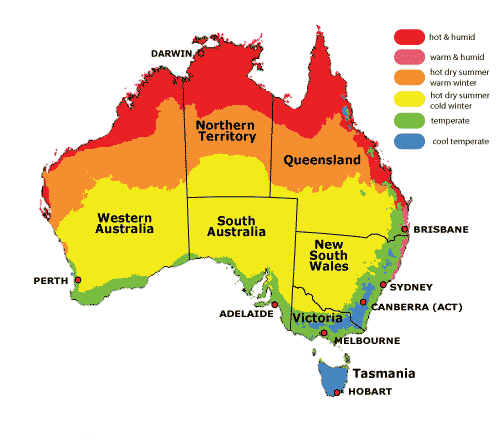During the months of January and February we have to find out information about the climate, food, flora and fauna in Australia.
Climate
Australia experiences temperate weather for most of the year but the climate can vary due to the size of our continent. The northern states typically experience warm weather much of the time, with the southern states experiencing cooler winters. Australia is also one of the driest continents on earth with an average annual rainfall of less than 600 millimetres. Like all countries in the southern hemisphere, Australia's seasons are opposite to those in the northern hemisphere. December to February is summer; March to May is autumn; June to August is winter; and September to November is spring.
Australian food and drink
 Scratchleys on the Wharf, Newcastle Harbour, NSW, courtesy of NSW Explorer.
Scratchleys on the Wharf, Newcastle Harbour, NSW, courtesy of NSW Explorer.Stores of rum and beer, as well as the makings for them, grapevine cuttings for wine, coffee plants and beans, and ginger were unloaded in 1788 with the First Fleet arriving in the Colony of New South Wales. Ginger beer, cordial and lemonade factories sprang up as the colonies developed.
The influx of migrants from Europe and America during the gold rushes of the 1850s spurred the drinking of coffee and the expansion of street vendors with pies and Cornish pasties. The new arrivals also developed a taste for Chinese food with fresh green vegetables, available in China towns, and especially in the port cities from the 1860s and throughout the 1870s.
 Prawns in saffron and lime, no source
Prawns in saffron and lime, no sourceFrom the 1880s, grand ornate coffee palaces offered coffee drinking and dining as alternatives to the alcohol fuelled atmosphere of the pubs. Coffee lounges became part of the modern jazz culture of the 1920s and 30s and expanded with the influx of American servicemen and European migrants in the 1940s.
 Smokey barbecue, no source
Smokey barbecue, no sourceAt the end of the Second World War (1939–45), there was another influx of migrants, which bought new ingredients and new flavours. This willingness to experiment and discover new taste experiences transformed Australian cooking. Australian food began to be defined by the changes brought about by new styles of cooking, especially Mediterranean, Asian, Indian, and African.
Today, many contemporary Australian chefs display these qualities of innovation and bold experimentation in their expression of originality, and are recognised worldwide for their skill and imagination.
Our hall
 |



